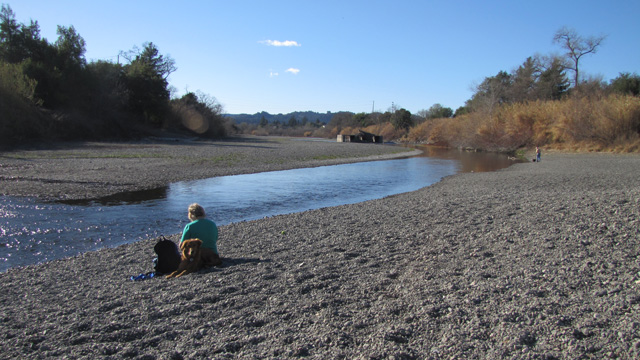Recent storms have lifted conditions out of the worst-cast scenario for which the state was planning. So far, that extra water is earmarked for two purposes. Some is going to water districts that were already owed water from last year, because at the time, they opted to carry the supply over to this year instead of using it.
Some water is going to holders of “senior” water rights. Under California’s complex system of rights, they’re first in line to have their needs met. That includes rights holders on the Feather River, north of Sacramento, and San Joaquin River exchange contractors in the Central Valley.
As to how much districts with “junior” rights will get, state officials left the door open on what their final water deliveries would be, saying they’re still analyzing the effects of recent storms on the Sierra snowpack, and that a reassessment may come later this month.
Water for Wildlife
The state is also suspending some rules designed to protect endangered salmon and fish in the Sacramento-San Joaquin Delta. The standards specify the amount of freshwater in the ecosystem, as well as the quality and temperature – all factors that help chinook salmon, steelhead and Delta smelt survive and reproduce.
“This proposal falls far short of being a balanced plan,” says Kate Poole of the Natural Resources Defense Council. “It calls for the Central Valley Project and State Water Project to violate upstream water temperature requirements, waive water quality standards and violate pumping restrictions in the Delta.”
“I think what we’re doing is finding maximum flexibility under existing law and trying to balance multiple needs in a third dry year,” said Chuck Bonham of California’s Department of Fish and Wildlife.
The toll on endangered winter-run chinook salmon could be substantial. Adult salmon lay their eggs in the Sacramento River during the summer. To survive, the eggs and young salmon rely on cold water, which is released from Shasta Dam. Under the worst-case scenario, water in the river would be too warm for salmon by the end of the summer.
“This is a serious situation for that species,” says Maria Rea of NOAA Fisheries. The plan includes increased monitoring of salmon. Rea says they’re also looking at producing more young hatchery salmon and potentially rescuing salmon in the river and relocating them to new habitat.
Wildlife refuges and wetlands, a crucial stopover for migratory birds, will receive 15-to-30 percent of their water supply. “We’re looking at very wet conditions in the Midwest and Canada,” said Bonham. “We anticipate a whole heck of a lot of birds coming to California and they’ll be looking down at some of the driest habitat they’ve seen in decades.”
Water for Next Year
As the state faces a growing chorus of demands for water this year, officials are also planning to bank water, in case 2015 is an equally dry year.
“As we consider any increase in allocations, one of our priorities will be to ensure we have enough water to meet those 2015 needs,” said Cowin. Demand for drinking water from state and federal projects could be even higher next year, as water districts lean heavily on local supplies to meet needs this year.
The plan calls for 1 million acre-feet of water to be reserved in Lake Oroville this year. (One acre-foot is about 325,000 gallons, about what two California household use in a year.) Federal reservoirs will hold 1.4-to-1.9 million acre-feet of water to carry over into next year.
The current plan doesn’t factor in a possible El Niño, which some early indications show could create wet conditions this winter. “Clearly, we’d love an El Niño or any other weather condition that improves the drought situation but we’re not going to bet on that,” says Cowin.
Officials stressed that the plan is a framework for water operations this summer, but could change as demands and priorities shift.
